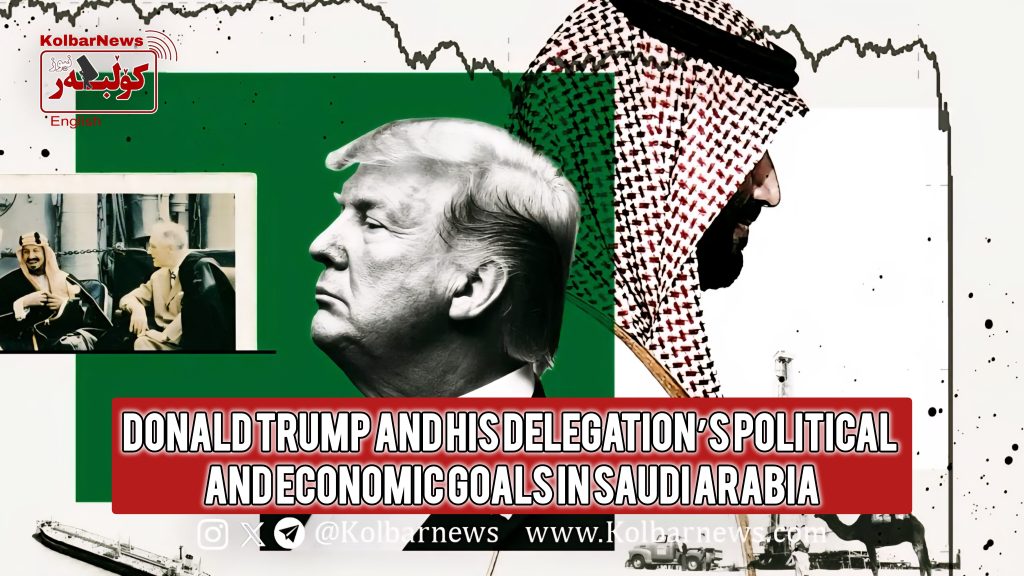
On the morning of Tuesday, May 13, 2025, U.S. President Donald Trump, accompanied by a delegation of major capitalists, arrived in Saudi Arabia. This trip carries multiple objectives. The American ruling establishment seeks to regain and monopolize the security umbrella over the Saudi kingdom, as it did in the 1970s, and to distance the Saudi government and its fabulously wealthy elites from China’s influence.
In the 1970s, U.S. imperialism agreed to protect the Saudi regime under three conditions: Saudi oil production and sales would be aligned with U.S. interests. All oil transactions would be conducted in U.S. dollars, a system known globally as the “petrodollar.” A significant portion of Saudi oil revenues would return to U.S. markets through the purchase of weapons and other goods.
Now, amid America’s political, economic, and military decline and as Saudi Arabia shows signs of pursuing greater independence the U.S. ruling elite sees a renewed return to these old commitments as vital. This trip also sends strong political messages to the Islamic Republic of Iran, suggesting that if the regime yields to U.S. demands, Washington may offer peace and friendship.
Most censored newspapers in the region have optimistically reported on Trump’s visit and his promises. Notably, Trump distanced himself from Israel’s far-right rulers by avoiding mention of forcibly removing Palestinians from Gaza. He also reportedly secured a commitment from Ahmad Shar’a formerly an Islamist militant and now Syria’s interim leader to recognize Israel.
Economically, the focus is sharper: the U.S. financial oligarchy, as in the past, is eyeing the legendary wealth of the Saudi royal family, prominent sheikhs, and the state itself. Trump and his billionaire allies including Elon Musk (the world’s richest man), Sam Altman (CEO of OpenAI), and Jensen Huang (CEO of chip giant Nvidia) are primarily driven by their own business interests. While providing a political cover for the visit, they are pursuing financial gains.
Saudi Arabia has not disappointed them. Trump announced that the kingdom pledged $600 billion in investments in the U.S. over the next four years, along with a $142 billion purchase of military equipment. Crown Prince Mohammed bin Salman and his regime will undoubtedly use the torture devices, small arms, fighter jets, missiles, and other offensive weapons supplied by Washington to suppress domestic dissent and confront regional rivals.
Still, it seems the outcomes of the visit have not fully satisfied the greed, egotism, deceit, and boundless corruption of America’s ruling capitalist class. Signs of Saudi Arabia’s shift toward some level of independence remain. For instance, Saudi leaders still condition recognizing Israel on the establishment of an independent Palestinian state.
Importantly, workers should understand the origins of the Saudi regime’s immense wealth worth hundreds of billions of dollars and concentrated among 15,000 royal family members and powerful sheikhs. Experts typically cite oil and gas revenues, taxes, religious tourism (Hajj), and foreign investments as primary sources. Yet no so-called “ethical” analyst mentions the wealth generated through the exploitation of cheap labor by millions of male and female workers.
According to the Saudi General Authority for Statistics, as of mid-2024, the country’s labor force (ages 15 and above) was just under 24 million, 59% men and 41% women. Of the 16.5 million employed individuals, approximately 60% were migrant workers, while 40% were Saudi nationals. Around 80% of migrant workers are employed in the private sector. A massive wage gap exists between Saudis and non-Saudis: migrant workers earn roughly $660 per month, compared to $2,400 for Saudi workers. The highest-paid locals work in government offices or managerial and engineering roles in the oil, gas, and tourism sectors.
The legal, economic, and social rights of migrant workers are severely lacking and the conditions for nearly one million, mostly female, domestic workers are especially dire. The U.S. government, increasingly leaning away from liberalism and toward authoritarianism, is likely to learn from the brutal dictatorship of the Saudi royal family.
Meanwhile, American super-billionaires are also likely to teach their Saudi counterparts the latest business and investment techniques. Nonetheless, a material basis exists for migrant workers in Saudi Arabia and the Gulf emirates as well as workers in Iran to learn from global developments and struggle toward liberation from slave-like labor conditions.

